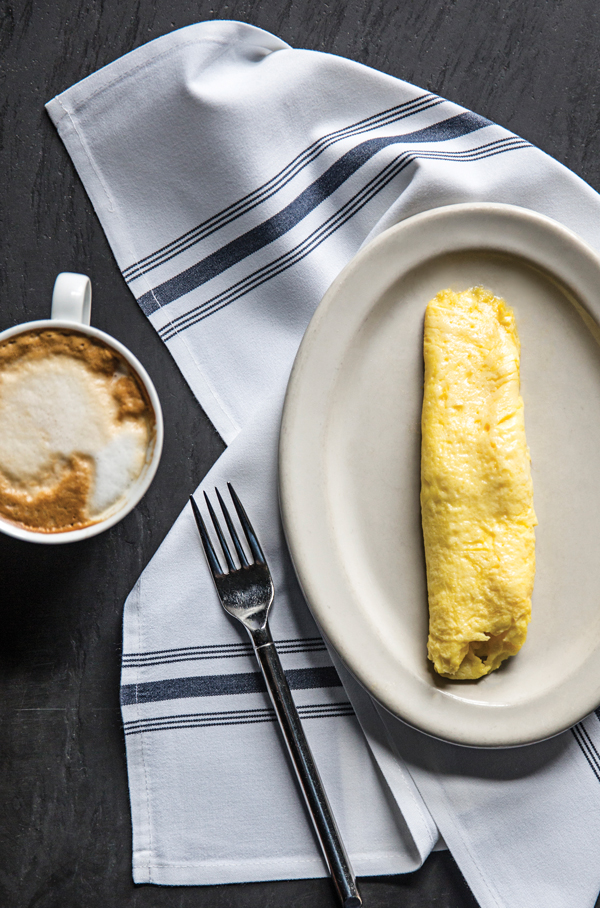
“An omelet in its purest form is sacred to me,” says Linton Hopkins as he sets a nonstick skillet with shallow, sloping sides on the stove. “The fewer ingredients the better, so long as they are of exceptional quality: the best farm eggs you can get, really good butter, and sea salt. I don’t even add pepper.”
To be clear, Hopkins isn’t talking about the puffy half-moons bulging with cheese and veggies found on diner menus across America—that’s a Western-style omelet. He’s talking about the French omelette roulée, or rolled omelet, a deceptively challenging dish said to be the true test of a chef’s skill. From pan to plate, the whole process takes less than two minutes. The texture should be tender and velvety, says Hopkins, not spongy or rubbery, with soft curds in the center that border on underdone (they’ll continue to cook from the residual heat once rolled). The finished product should be uniformly pale yellow with no creases or cracks. “An omelet is a lesson in simplicity, judgment, and hand-eye coordination,” says Hopkins. “Once you get the technique down, you won’t even need a spatula.”

1 Have a serving plate ready on the counter beside the pan, along with sea salt for seasoning. Crack two large eggs into a bowl. Beat vigorously with a fork until whites and yolks are thoroughly incorporated but not foamy.

2 Set your skillet over high heat. Add 1 Tbsp. butter and tilt pan to coat. There should be wisps of steam rising from the pan when the butter starts to sizzle. As it foams, add eggs and quickly twist the pan to coat the bottom.

3 Sprinkle eggs with salt. Constantly shake the pan to lightly scramble the eggs. Smooth over the top with a fork as needed to ensure even cooking, until soft curds begin to appear and a thin skin forms on the bottom of the pan. If curds form too quickly, remove from heat.

4 Tilt pan toward plate. Using a fork, gently loosen the top edges of the omelet and allow it to roll over itself, slowly tilting the pan further until the omelet rolls onto the plate. For a more even shape, set a clean tea towel over the omelet and gently press the edges inward with the sides of your hands.

5 Remove towel and gloss the top of the omelet with butter. Serve immediately.
The Perfect Pan
For the omelet maker in your life, Hopkins suggests the 8.5-inch Original French Chef Omelette Pan by the Pot Shop of Boston. This deluxe utensil is made of heavy cast-aluminum for slow, even cooking.
 About Linton Hopkins
About Linton Hopkins
Since he opened Restaurant Eugene with his wife, Gina, in 2004, Hopkins’s empire has grown to include Holeman and Finch Public House, H&F Burger, Hop’s Chicken, and a bread company that delivers to kitchens citywide. In November 2014, the 2012 James Beard Award winner for best chef in the Southeast opened the Atlanta Botanical Garden’s Cafe at Linton’s, which is set to move into a two-story, state-of-the-art facility later this spring. This classic rolled omelet will be available all day.
Illustrations by Joel Kimmel
This article originally appeared in our March 2016 issue.













